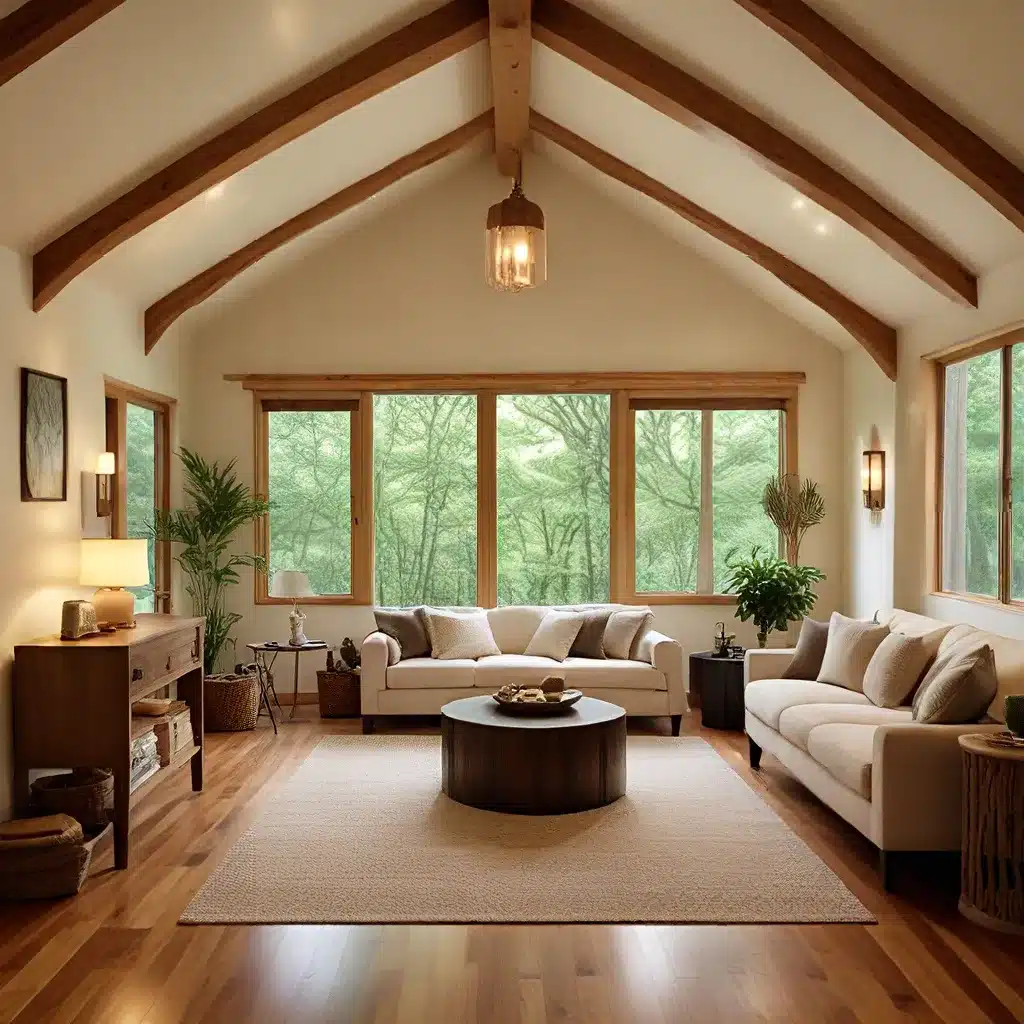
In a world that increasingly demands our attention and energy, the need for tranquil, restorative spaces in our homes has never been more paramount. As the boundaries between work and leisure continue to blur, crafting harmonious hideaways – personal sanctuaries that nurture our well-being – has become a transformative design challenge. Whether you seek to create a Zen-like retreat, a sumptuous luxury living oasis, or a cozy nook for mindful contemplation, the art of designing peaceful sanctuaries is a captivating exploration of interior design, space planning, and the psychology of place.
Embracing Biophilic Design
At the heart of creating harmonious hideaways lies the principle of biophilic design – the innate human desire to connect with nature. By incorporating natural elements, textures, and hues into our living spaces, we can harness the restorative power of the outdoors and forge a deeper bond with our environment. Consider the soothing influence of a living green wall, the calming presence of a water feature, or the tactile appeal of natural stone or wood accents.
| Design Element | Biophilic Benefit |
|---|---|
| Natural Lighting | Enhances mood, regulates circadian rhythms, and promotes a sense of well-being. |
| Organic Textures | Provides a tactile connection to nature, reducing stress and anxiety. |
| Potted Plants | Purifies the air, boosts productivity, and fosters a sense of nurturing. |
By seamlessly integrating these biophilic design elements, you can create a soothing sanctuary that transports you from the hustle and bustle of everyday life. Embrace the calming influence of nature, and let your home become a harmonious hideaway that nourishes your mind, body, and soul.
Crafting a Serene Ambiance
Cultivating a serene ambiance within your harmonious hideaway is essential for fostering a sense of tranquility and relaxation. Carefully curated lighting, soft textiles, and a strategic use of color can all contribute to the creation of a calming oasis.
Incorporate natural lighting wherever possible, as it has a profound effect on our mood and well-being. Strategically placed windows, skylights, and light tubes can bathe your sanctuary in a warm, soothing glow, while dimmable lighting fixtures allow you to adjust the ambiance as needed.
Soft, plush fabrics such as velvet, linen, and cotton can add a luxurious layer of comfort to your space, inviting you to sink in and unwind. Complement these textiles with organic materials like jute, rattan, or bamboo to create a harmonious blend of textures that engage the senses.
When it comes to color, muted, earthy tones such as sage, terracotta, and deep blues can instill a sense of calm and tranquility. These hues, often found in nature, have a grounding effect that can help alleviate stress and promote relaxation. Experiment with layered palettes and tonal variations to craft a cohesive, serene atmosphere.
Personalized Sanctuaries
While harmonious hideaways share common design principles, the true magic lies in the personalization of these spaces to reflect your unique lifestyle, personality, and design aesthetic. Collaborating with an experienced interior designer can help you translate your vision into a bespoke sanctuary that caters to your specific needs and preferences.
Whether you envision a cozy reading nook, a meditative yoga studio, or a luxurious spa-like bathroom, your designer can help you navigate the intricacies of space planning, zoning, and furniture arrangement to create a harmonious flow and a cohesive design narrative.
Personalization can also extend to the decor and accessories that adorn your sanctuary. Carefully curated artwork, calligraphy, sculptures, or antique treasures can imbue your space with a sense of individuality and sentimental value. The addition of personal mementos, photographs, or inspirational quotes can further solidify the space as a truly unique haven that nourishes your soul.
Embracing Sustainable Design
As we strive to create harmonious hideaways, it is essential to consider the long-term impact of our design choices on the environment. Embracing sustainable design practices not only aligns with our values but also contributes to the overall well-being of our sanctuary and the planet.
One key aspect of sustainable design is the selection of eco-friendly materials that are durable, renewable, and responsibly sourced. This might include natural stone, reclaimed wood, bamboo, or organic textiles that have been produced with minimal environmental impact.
Incorporating energy-efficient lighting, smart home technology, and water-saving fixtures can also enhance the sustainability of your harmonious hideaway, reducing your carbon footprint and utility costs in the long run.
Beyond the physical aspects of your space, you can further cultivate a sustainable mindset by incorporating houseplants that purify the air, composting systems, and water-wise gardening techniques. These small but impactful decisions can transform your sanctuary into a harmonious ecosystem that nourishes both your well-being and the planet.
Conclusion
As we navigate the complexities of modern life, the creation of harmonious hideaways within our homes has become an increasingly vital pursuit. By embracing biophilic design, cultivating a serene ambiance, and personalizing our sanctuaries, we can craft peaceful refuges that restore our sense of balance and connection.
Moreover, by embracing sustainable design practices, we can ensure that our harmonious hideaways not only nourish our own well-being but also contribute to the health of our environment. As you embark on your journey to create a harmonious sanctuary, remember that the true essence of these spaces lies in their ability to soothe the soul, rejuvenate the spirit, and foster a deep sense of belonging within the comfort of our own homes.

